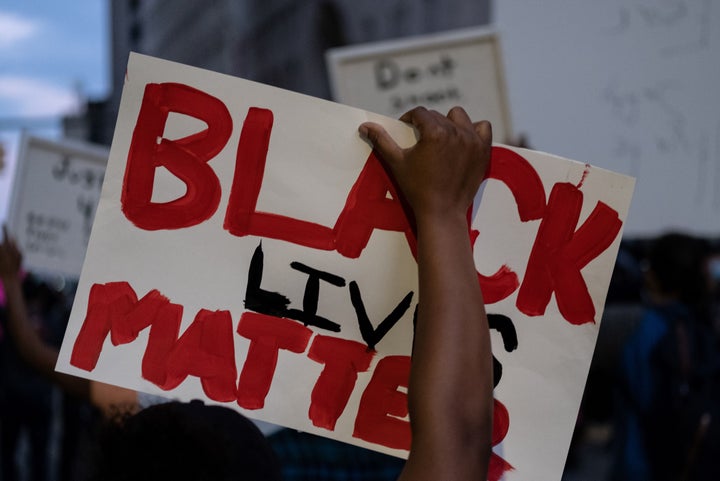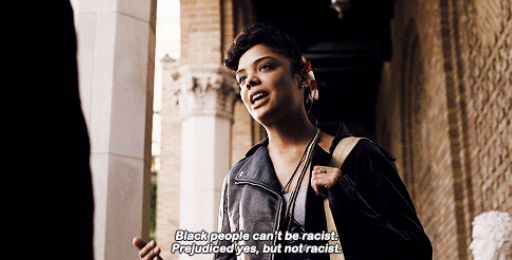7 Myths About Black Lives Matter People Need To Stop Believing
In the wake of police violence against George Floyd, Breonna Taylor, Jacob Blake and countless other Black men and women, the Black Lives Matter movement once again has the national spotlight. But with so much confusion and disinformation plaguing the conversation, not everyone understands what BLM is or how it works.
At best, myths about Black Lives Matter prevent people from giving their support. At worst, these myths actively detract from the movement and the anti-racism work its members have been doing.
“What some people might call myths, I don’t see them as myths ― I see them as tools by other groups used to do harm, stop change and maintain the status quo,” said Richard M. Cooper, a clinical assistant professor at Widener University whose work centers on race and social justice issues.
In other words, myths don’t just fall from the sky. They’re created. “They are a tool to provide misinformation, to incite fear, to get people to misunderstand an issue so that …we don’t have to promote structural change,” Cooper said.
With that said, here’s a look at the most harmful untruths surrounding the Black Lives Matter movement that need to end.
1. It’s new.
The phrase “Black lives matter” wasn’t really part of the modern conversation until the killing of Trayvon Martin, when writer and activist Alicia Garza included the phrase in a Facebook post and it was amplified by others. But the idea has been fought for over the past several hundred years.
“It’s really a continuation of the legacy of fighting for civil rights and social justice by people of color, particularly Black people…. It just happens to be called ‘Black Lives Matter’ now,” Cooper said.
He added that the only thing that’s really changed is the access activists have to platforms, particularly online, and the speed with which people can get that information. “But we are still talking about an ethnic group of people who have had to constantly and consistently fight for social agency and human rights in a society that continues to find ways to deny them of such,” Cooper said.
2. It’s disorganized.
There are three well-known founders of the Black Lives Matter organization, including Garza, but the general movement by that same name is a decentralized, grassroots effort that spans regions, demographics and mediums. For that reason, some critics say that it lacks leadership or a clear agenda. However, Cooper said this is largely a generational misunderstanding.
When it comes to the fight for civil rights, older generations were accustomed to seeing it unfold a certain way: A national or regional leader would serve as the spokesperson, organizing protests, sit-ins and other methods of demonstration, and lead the charge for change.
Black Lives Matter, on the other hand, exists in pockets across the country (and the globe). There’s no “right way” to get the message across, and members from hyperlocal chapters and other organizations rely on a variety of methods, including sustained protesting, social media campaigns, art and poetry.

According to Cooper, the criticism shows a lack of understanding about the particular features of the organizers and their strategies. “They have been very smart and organic,” Cooper said.
For an outsider, it might seem disorganized. But like demonstrations of the past, such as the Montgomery, Alabama, bus boycott in the 1950s, many strategic choices have been made that people of color don’t get enough credit for, Cooper said. “It shows a level of sophistication, actually, and an understanding of nuances and regional differences that this group has organized far better than past movements.”
3. It’s pro-violence.
About 93% of the 10,600-plus racial justice protests in the U.S. this summer have been peaceful. Those that did become violent involved aggression by police or by counterprotesters from extremist groups, researchers noted. But one-off instances of violence, looting and aggressive demonstrators have been conflated to suggest the Black Lives Matter movement employs and condones violence.
“It’s absurd because it’s the thing we’re protesting against,” said Michelle Saahene, co-founder of the activist group From Privilege to Progress. “People need to be able to differentiate between protesters and rioters, or protesters and opportunists.”
The unfortunate truth is that there will always be outliers who look for opportunities to cause chaos or harm during tense times. Looting and riots also occur because of hurricanes, sporting events and for many other terrible reasons. That doesn’t excuse the violence surrounding Black Lives Matter protests, by any means. But it is important to understand that the actions of these individuals are not aligned with the mission of the movement.
And sometimes the violence is strategic. The riots that took place in Minneapolis following the police killing of George Floyd, for example, were stoked by a white supremacist. Two people were killed and a medic was wounded by a white teenager with a semiautomatic rifle at a Black Lives Matter protest in Kenosha, Wisconsin, last month.
“Because there’s so much anti-Blackness, and white supremacy wants to be protected at all costs, people go out of their way to make it look like this movement is a violent movement,” Saahene said. “People really need to just think a little bit deeper… about what Black Lives Matter actually stands for and what they’re fighting against. Violence just doesn’t make any sense.”
4. It’s anti-police.
Law enforcement’s track record with Black Americans is troubling, to say the least. Not only are Black men and women disproportionately stopped, arrested and killed by police, many of these instances of violence occur following 911 calls for fairly routine issues.
But the Black Lives Matter movement is not about retaliation or eliminating police. Rather, it’s about examining the structure of law enforcement and how it can better serve communities, especially Black and brown ones.
Defunding the police is a big part of that goal. And that idea is scary to a lot of people, often because they don’t understand what it means. Defunding isn’t about abolishing law enforcement. “It’s to look at how police departments have been funded to do things that they shouldn’t necessarily have to do anyway and don’t necessarily do well, that would be better met by other groups who’ve been trained differently and provided better resources,” Cooper said.
For example, domestic disturbances or mental health crises could be responded to by social workers or medical professionals rather than armed police officers. “If you come to a situation with a weapon, there is a possibility, even with a particular police officer who may be well-intentioned, for something to escalate if for no other reason than you’re coming with a gun,” Cooper said. The goal would be to deescalate these types of situations without the need for force ― and hopefully save lives in the process.
5. It’s racist.
The phrase “Black lives matter” is not meant to be divisive. And yet it ruffles some (white) people’s feathers. Some even go so far as to claim that prioritizing Black lives is a form of reverse racism (which, by the way, is not a thing).
“Because our lives are treated as if they don’t matter, we have to specifically say that they do,” Saahene said. “It’s just a phrase to get people to understand that because you have black skin does not mean that you should be treated any differently and certainly doesn’t mean that your life should be cut short.”
“We’re not saying Black lives matter more, we’re saying they matter too,” added Melissa DePino, who co-founded From Privilege to Progress alongside Saahene. “It’s not about giving someone more and someone else less. It’s about creating a situation in which everybody has the same privileges.”
6. It’s a front for Democratic funding.
Saahene said that there is a misconception that the Black Lives Matter movement arose for the purpose of gaining political control.
One of the biggest contributors to this idea is likely a now-deleted Facebook post that claimed donations to Black Lives Matter were being funneled to a “Democrat Super PAC.”
The claims were based on a video circulated on social media that showed that attempts to make donations on the Black Lives Matter website redirected users to a website called ActBlue. The video then showed a page on OpenSecrets.org that tracked how ActBlue spends its money, highlighting several multimillion-dollar contributions to campaigns for Democratic presidential candidates such as Sen. Bernie Sanders (I-Vt.) and former Vice President Joe Biden.
What is misunderstood in this video and the subsequent Facebook post is that ActBlue is simply a donation processing platform. Though it is popular among Democratic politicians and progressive nonprofits, it acts similarly to PayPal or other online payment systems. ActBlue doesn’t actually pocket any of the donations or decide how they’re allocated. A donation to Black Lives Matter goes to Black Lives Matter.
Though members of the movement do seek to change many of the laws and policies that harm Black people, Saahene said, it’s not a political group. “They’re activists like me.”
7. It’s on Black BLM supporters to fix racism.
Though it can be tempting for white people to lean on Black friends and colleagues to educate them about racism and point out where it’s happening, the truth is that it’s not their job to fix racism. There’s enough emotional labor to dealing with racism in everyday life; the last thing white allies need to do is add to that burden.
“When you’re doing anti-racism work, you can’t always have the victims doing the work,” Cooper said. “It’s those who have the advantages, structurally and historically, who need to be rolling up their sleeves.”
DePino agreed that racism is not a “Black problem” and it’s up to white people to learn history, acknowledge and understand their biases, and figure out how to stop causing harm, even if it’s unintentional. “That’s the work that we have to do. And we can’t just pay attention when someone gets murdered. We have to pay attention all the time and integrate it into our everyday life.”
Published at Fri, 18 Sep 2020 09:45:19 +0000
Warning: Undefined variable $post in /var/www/wp-content/themes/newsup/inc/ansar/hooks/hook-index-main.php on line 117

